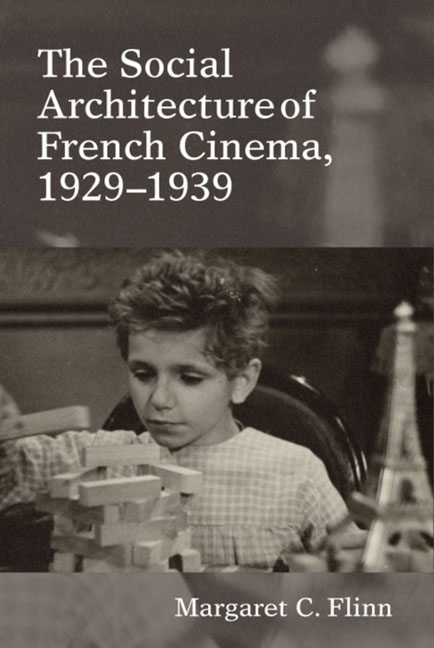Book contents
- Frontmatter
- Contents
- List of Illustrations
- Acknowledgements
- Introduction: An Architecture of Social Being
- 1 The Spatial Constitution of 1930s Documentary
- 2 René Clair's City Views: Realism and Studio Paris
- 3 Intertext and Political Margins in Jean Renoir's Boudu sauvé des eaux
- 4 Traversing Built History in Architectural Documentaries
- 5 Flâneuses and the Unmaking of Place
- 6 The Crowd as New Monumentality during the Popular Front
- Epilogue: Poetic Realism as Spatial Fable
- Notes
- Bibliography
- Filmography
- Index
3 - Intertext and Political Margins in Jean Renoir's Boudu sauvé des eaux
- Frontmatter
- Contents
- List of Illustrations
- Acknowledgements
- Introduction: An Architecture of Social Being
- 1 The Spatial Constitution of 1930s Documentary
- 2 René Clair's City Views: Realism and Studio Paris
- 3 Intertext and Political Margins in Jean Renoir's Boudu sauvé des eaux
- 4 Traversing Built History in Architectural Documentaries
- 5 Flâneuses and the Unmaking of Place
- 6 The Crowd as New Monumentality during the Popular Front
- Epilogue: Poetic Realism as Spatial Fable
- Notes
- Bibliography
- Filmography
- Index
Summary
In my view cinema is nothing but a new form of printing—another form of the total transformation of the world through knowledge. Louis Lumière was another Gutenberg. His invention has caused as many disasters as the dissemination of thought through books.
—Jean RenoirIn 2005 the Cinémathèque Française reopened its doors in a new location, the Frank Gehry building that formerly housed the American Cultural Center in the Parisian Parc de Bercy. For a celebratory kick-off exhibition, the Cinémathèque partnered with the Musée d'Orsay to present a show entitled Renoir/Renoir. This exhibition brought together paintings of Pierre-Auguste Renoir and excerpts of films by Jean Renoir, with the express purpose of “shedding new light on the work of the Renoirs, and on the relationship between cinema and the fine arts in general.” The father–son exhibit and accompanying Jean Renoir film retrospective that served as the new Cinémathèque's opening program can be read as a conciliatory gesture: since the announcement some seven years earlier that the Cinémathèque would be leaving the beloved and historical Chaillot Palace and Boulevard screening rooms, the move had been the source of much controversy and even animosity among Parisian cinephiles and film professionals. Bringing the Bibliothèque du Film, the Cinémathèque screening rooms, and long-closed museum together with the offices of the Centre National de la Cinématographie would logically create a center that could allow the public, researchers, and staff of all institutions to take advantage of the interconnectedness of their respective missions. Unfortunately, the Bercy location was disliked for its decentered eastern Paris location, the garish “American-ness” of the chosen structure, and above all the reduction in space that each of the institutions would suffer in the Gehry building.
But, the organizers gambled, who could argue with Renoir? The genial cineaste's importance to the history of French cinema, and indeed the history of world cinema, practically guaranteed that the exhibit and retrospective would get the new Cinémathèque off to a positive start. And indeed, both were well received by critics and audiences. The Renoir/Renoir exhibit emphasized Renoir's double status in French artistic heritage: a great man and son of a great man.
- Type
- Chapter
- Information
- The Social Architecture of French Cinema1929–1939, pp. 58 - 83Publisher: Liverpool University PressPrint publication year: 2014



